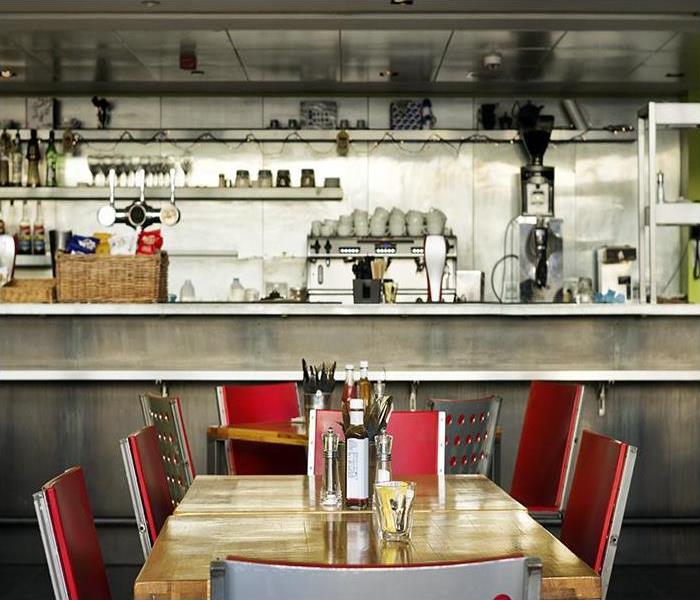Finding Commercial Mold Damage In Chicago Diners Is More Common Than What You Might Think
5/5/2017 (Permalink)
 When businesses have walk-in patrons or use water in their establishment's daily activities, the risk of commercial mold damage increases.
When businesses have walk-in patrons or use water in their establishment's daily activities, the risk of commercial mold damage increases.
Commercial Mold Damage In Diners
Mold only needs a few environmental factors to grow out of control. Mold is everywhere. However, mold usually grows very slowly, keeping it manageable and either easily cleaned away or hidden in locations that are rarely seen and hold all the three needed items for overgrowth simultaneously even more rarely.
When Chicago businesses have walk-in patrons or use water in their establishment's daily activities, the risk of commercial mold damage increases. When a business has both factors, the risk increases even more dramatically.
Patrons often bring in not only two things that mold needs to grow – moisture and cellulose, but also the mold itself. Cooking pasta, steaming seafood, and washing dishes with high-powered sprayers can all increase the level of moisture in the kitchen area. Contrary to what many people believe, combating mold growth does not mean that the air must be uncomfortably dry.
The moisture needed for mold to grow is the same moisture that makes the air comfortable to breathe. As people breathe in, the air in their lungs picks up moisture, and this moisture is also expelled when they breathe out. While this might be a small amount of moisture, it is felt on a personal basis. Drier air is noticeable because of the larger contrast between two different environments – moisture vs. drier.
When an area, such as a kitchen or bathroom area, is more humid than other sectors, like the dining or waiting areas are, a dehumidifier can decrease the amount of humidity that can linger in the air, without making the air uncomfortable to breathe. Other ventilation methods, including intake vents and ceiling fans, can help keep moisture from settling on surfaces. Having none of these measures can lead to mold damage throughout a restaurant. SERVPRO technicians have extensive experience and training to remediate mold disasters of any size. Proper remediation requires more than cleaning surfaces. Even cutting away and replacing materials heavily infested or destroyed by a mold infestation is not enough in most situations. Mold remediation, when conducted by SERVPRO, always includes preventative techniques.
These methods include cleaning or removal of anything affected by mold, but also include setting up HEPA-filter devices to clean the air of escaping mold particles and spores while we work. To continue filtering the air to help reduce the number of particulates, including mold-related ones, floating in the air, we can install an air filter that you can easily maintain. Along with air-filtration, we use sprays that encapsulate any mold found. As this sprayed-on liquid dries, it shrinks, crushing mold, spores, and any exposed hyphae. Hyphae are the root-like parts of mold that feed off materials and provide an anchor to the material – this is the part of the mold that leaves a stain behind when mold is cleaned away.
Situations involving commercial mold damage need the attention that the professionals at SERVPRO of Evergreen Park / South Chicago City are accustomed to providing. Calling (773) 337-3900, at any hour of the day or night, can be the start of the end of your mold disaster.






 24/7 Emergency Service
24/7 Emergency Service